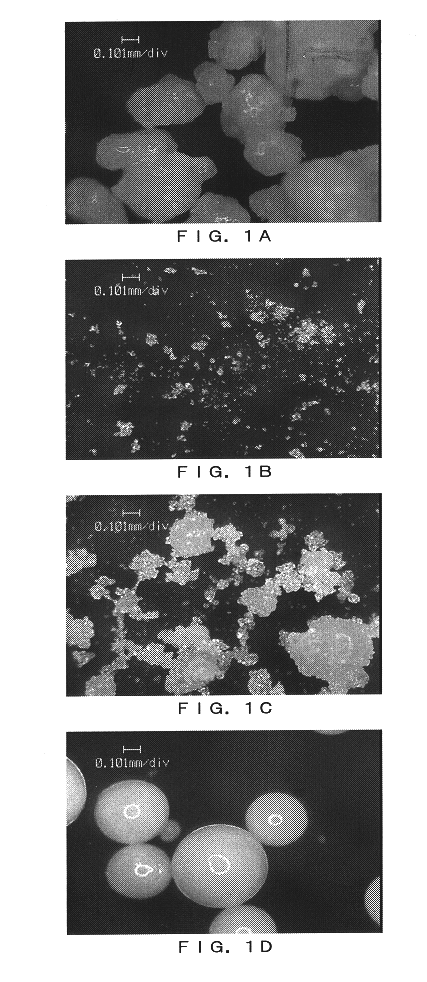Process for producing granules containing angiotensin-converting enzyme inhibiting peptides
a technology of angiotensin-converting enzyme and peptide, which is applied in the direction of peptide/protein ingredients, pharmaceutical product form change, drug composition, etc., can solve the problems of poor free-flowing properties, over-absorption of moisture, and wide particle distribution, so as to improve free-flowing properties and reduce the effect of granule size and narrow particle distribution
- Summary
- Abstract
- Description
- Claims
- Application Information
AI Technical Summary
Benefits of technology
Problems solved by technology
Method used
Image
Examples
example 2
4 Kg granules as manufactured in Example 1 were subjected to size reduction with a "Quadro.TM. Comil 197" to reduce particle size until particles of not less than 16 mesh size disappeared.
4 Kg fine powder obtained above were placed in a mixing fluid bed processor "MP-25" model of Powrex Corporation, Japan, as seed powder, and 21.6 kg purified whey (containing 26.5% solid matter) were sprayed onto the seed powder through two fluid nozzles for 5 hours, while fluidizing with hot air blowing. The operating conditions were as follows:
Inlet air temperature: 80.degree. C.
Outlet air temperature: 50 to 55.degree. C.
Amount of atomized air: 30 liters / second
The blade rotator: 300 r.p.m.
9.1 Kg granules of the end product were obtained.
example 3
4 Kg granules as of the end product as obtained in Example 2 were subjected to size reduction with a "Quadro.TM. Comil 1971" to reduce particle size with outlet screen holes of 0.8 millimeter diameter for the use of seed powder in the next step. 17.6 Kg purified whey were sprayed onto the 4 kg fine seed powder in a mixing fluid bed processor "MP-25" through 2 fluid nozzles, while fluidizing for 4 hours with hot air blowing under the same conditions as in Example 2, and 8.8 kg granules of the end product were obtained. The granules contained 215 mg / 100 g ACEI peptides, 9.0% water, and 0.7 g / ml specific gravity. The granules had the following particle distributions:
example 4
Tablets were manufactured by using 1 kg granules obtained in Example 3 at 20.degree. C. with 0.5% sucrose fatty acid ester, manufactured by Daiichi Seiyaku Co., Ltd., Japan, in a controlled environment of low humidity with a tableting machine CLEC-21K model (.PHI.20, 1R surface), manufactured by Kikukawa Co., Ltd., Japan. Hammering pressure was 4 metric tons, and die was rotated 10 r.p.m. and 400 tablets were obtained of round shape and 2.5 g per tablet were formed. No adhesion of the granules on the surface of the die and punch was observed, and the tablets formed had good uniformity, and suitable hardness for chewing. The tablets had the following properties:
Weight per tablet: 2.5 g
Thickness 6.87 mm
Hardness: 15.8 kg
Combining: good
Free-flowing: good
PUM
| Property | Measurement | Unit |
|---|---|---|
| Length | aaaaa | aaaaa |
| Length | aaaaa | aaaaa |
| Fraction | aaaaa | aaaaa |
Abstract
Description
Claims
Application Information
 Login to View More
Login to View More - R&D
- Intellectual Property
- Life Sciences
- Materials
- Tech Scout
- Unparalleled Data Quality
- Higher Quality Content
- 60% Fewer Hallucinations
Browse by: Latest US Patents, China's latest patents, Technical Efficacy Thesaurus, Application Domain, Technology Topic, Popular Technical Reports.
© 2025 PatSnap. All rights reserved.Legal|Privacy policy|Modern Slavery Act Transparency Statement|Sitemap|About US| Contact US: help@patsnap.com

